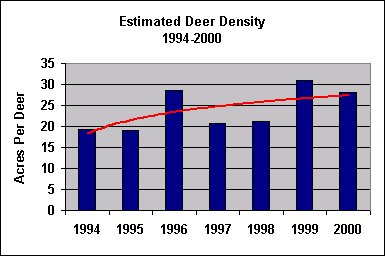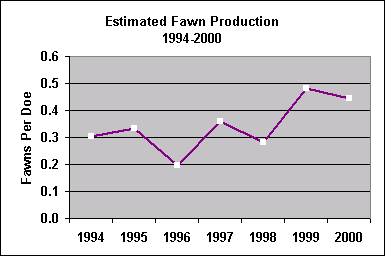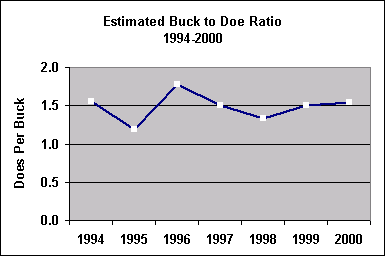South Texas Plains Wildlife Management White-tailed Deer Population Trends
Willacy County White-tailed Deer Population Data
The Texas Parks and Wildlife Department conducts deer surveys annually to monitor general trends in the deer population across the state. The south Texas staff conduct 202 deer surveys from late August through early October using either an aerial or spotlight survey method. The 170 aerial surveys cover approximately 316,937 acres on 4,376 miles of transects. The remaining 32 spotlight surveys cover approximately 27,200 acres on 451 miles of transects.
Staff record the number of bucks, does, and fawns encountered on the surveys and use those to determine population characteristics such as sex ratios, fawn production, and general deer densities. An average deer density can then be determined for the entire county. The deer density can then be used to estimate the deer population for the county based on the acres of deer habitat in the county. TPWD uses some of this information in drafting or evaluating changes to harvest regulations. Landowners, ranchers, hunters, and wildlife managers may also use this data for comparison with results from surveys conducted on individual ranches.
While, this data is useful on a landscape scale to TPWD staff, it may not provide an accurate representation of the deer herd in a specific area. In fact, deer densities can vary widely from ranch to ranch. So, if the average deer population sounds a little low or high for a particular county consider the general habitat in the county and other factors that affect survey results such as weather. Remember, our survey transects cover whole counties, and include all types of habitats, even poor habitats not capable of supporting a deer herd.
The Texas Parks & Wildlife Department offers technical assistance to landowners interested in deer management as well as other wildlife and habitat management issues. If you would like assistance regarding deer surveys and the methods for your ranch or wildlife management association contact your local Texas Parks & Wildlife Biologist or Technician. Click on the wildlife district county map to find the biologist in your county.


